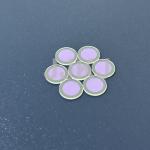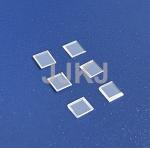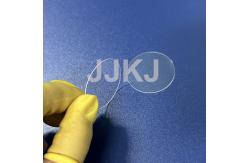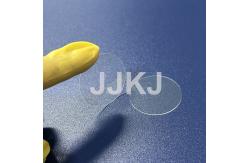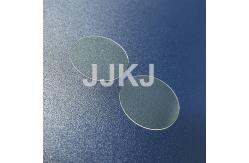Sapphire is a single crystal aluminum oxide (Al2O3),is renowned for
its exceptional optical properties and wide range of applications
in various industries. Sapphire's remarkable attributes, such as
high hardness, excellent optical transparency, chemical stability,
and thermal conductivity, make it an ideal material for optical
components in demanding environments.
Sapphire Optical window Specifications:
| Name | Sapphire Optical window |
| Material | Sapphire single crystal |
| Orientation | C-axis |
| Hardness | Mohs 9 |
| Diamter | 1-500mm |
| Diamter tolerance | ±0.05mm |
| Thickness | 0.1-100mm |
| Thickness tolerance | ±0.05mm |
| Parallelism | ≤3 ARC Min |
| Surface quality | Double Side Polisehd 60/40 |
| Chamfer | 0.1-0.5mm*45 |
| Clear Aperture | 90% |
| Coating | According to customer needs |
Our main products:
Sapphire optical components' applications:
1.Laser Systems: Sapphire is frequently used in laser systems for its high optical
transparency, thermal conductivity, and resistance to laser-induced
damage. It serves as windows, lenses, and laser rods in solid-state
lasers, as well as beam splitters and optical isolators.
2.Aerospace and Defense: In aerospace and defense applications, sapphire optical components
are used in aircraft windows, missile domes, and targeting systems.
Their hardness and scratch resistance make them ideal for
protecting sensitive optical systems in harsh environments.
3.Medical Devices: Sapphire optics are utilized in medical devices such as endoscopes,
surgical lasers, and biomedical sensors. Their biocompatibility,
optical clarity, and resistance to sterilization processes make
them suitable for use in medical diagnostics and treatments.
4.Optical Communication: Sapphire optical components play a role in optical communication
systems, including fiber-optic networks and telecommunications
equipment. They are used as fiber-optic connectors, waveguides, and
optical switches due to their low insertion loss and high
reliability.
5.Scientific Instruments: Sapphire is used in various scientific instruments, including
spectrometers, microscopes, and telescopes. Its optical clarity,
thermal stability, and resistance to chemical attack make it
valuable for precision optical components in research and analysis.
6.High-Temperature Environments: Sapphire optical components are employed in high-temperature
environments, such as combustion chambers and industrial furnaces,
where traditional optical materials would degrade. Their thermal
stability and resistance to thermal shock make them suitable for
monitoring and imaging applications in extreme conditions.
7.Substrate for Electronics: Sapphire wafers are used as substrates in the production of
light-emitting diodes (LEDs), radio frequency integrated circuits
(RFICs), and other electronic devices. Their high thermal
conductivity and electrical insulation properties make them ideal
for supporting semiconductor materials and enhancing device
performance.
8.Optical Sensors: Sapphire optical components are utilized in optical sensors for
various applications, including environmental monitoring, chemical
sensing, and industrial process control. Their optical
transparency, stability, and resistance to harsh conditions enable
the accurate detection and measurement of light signals.




